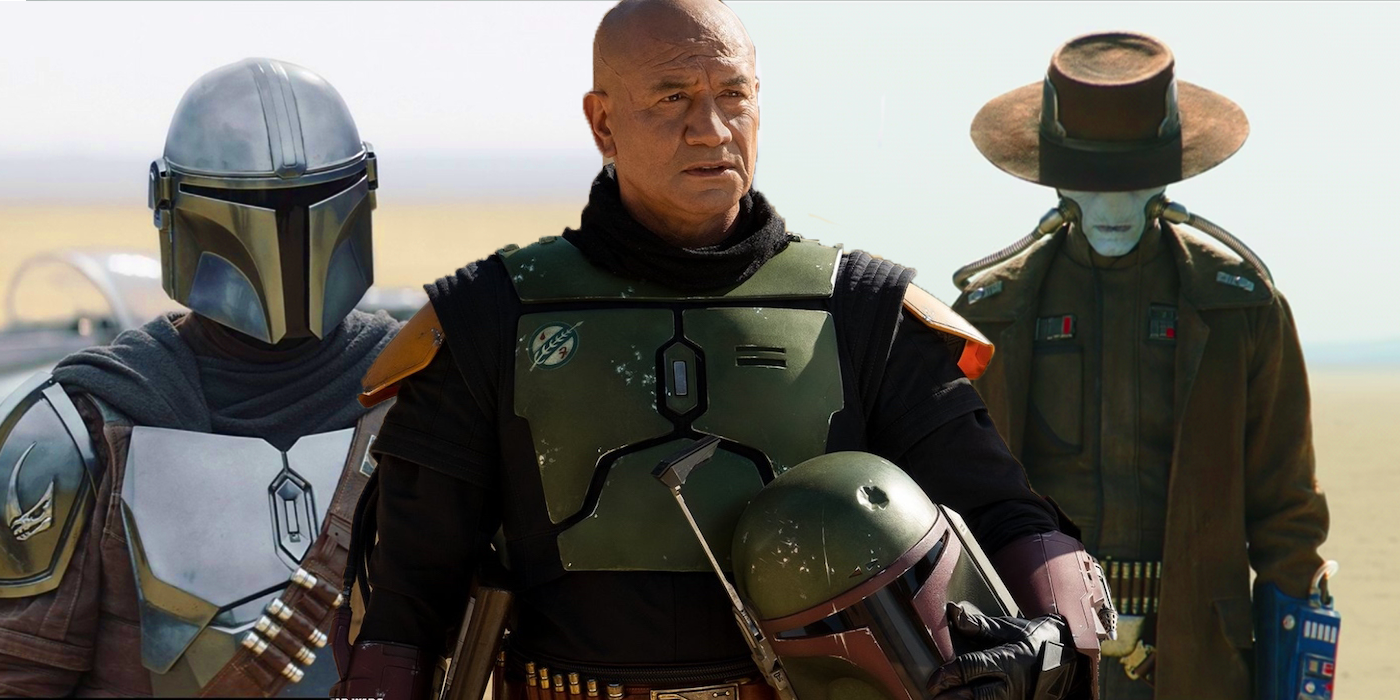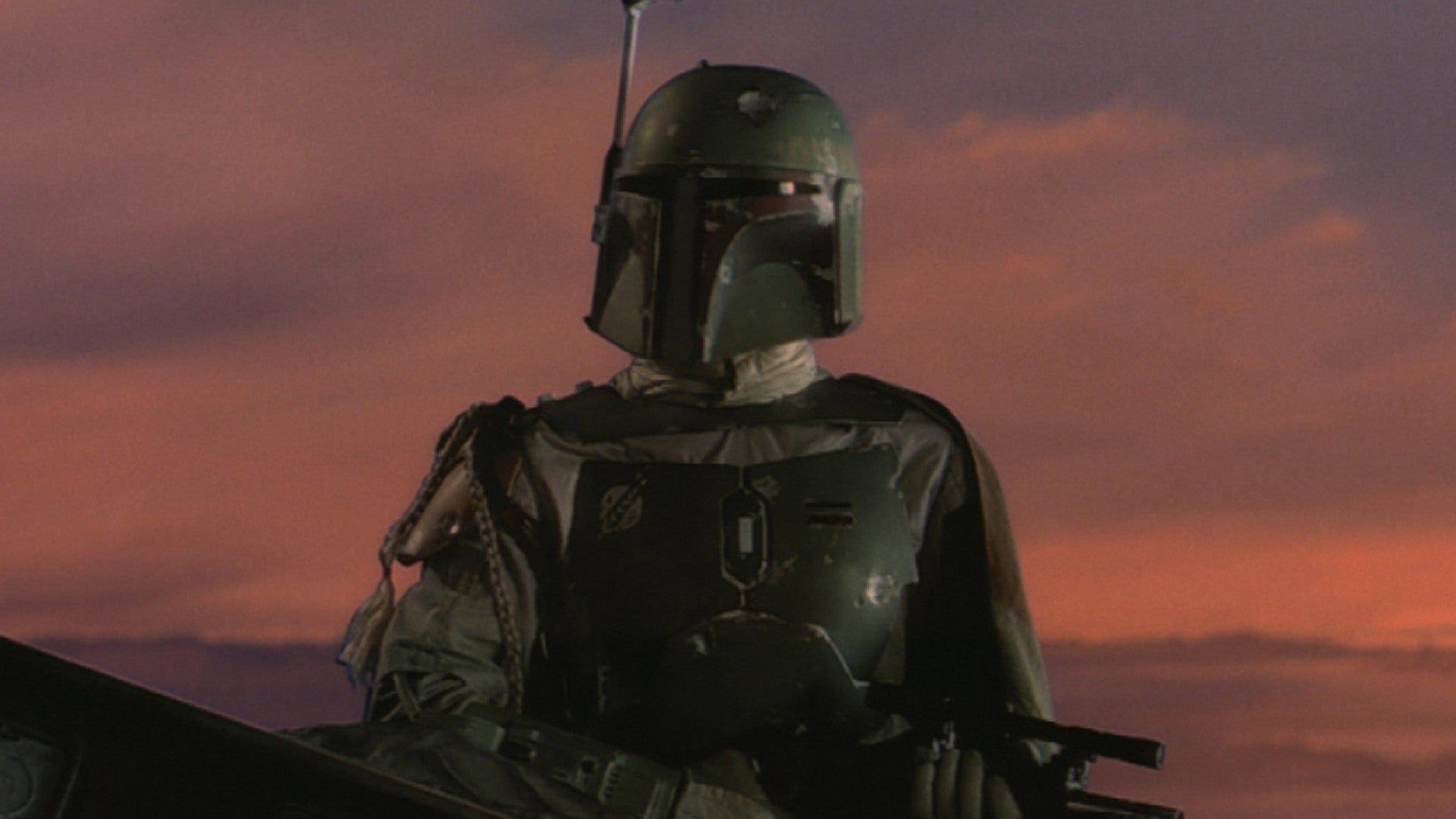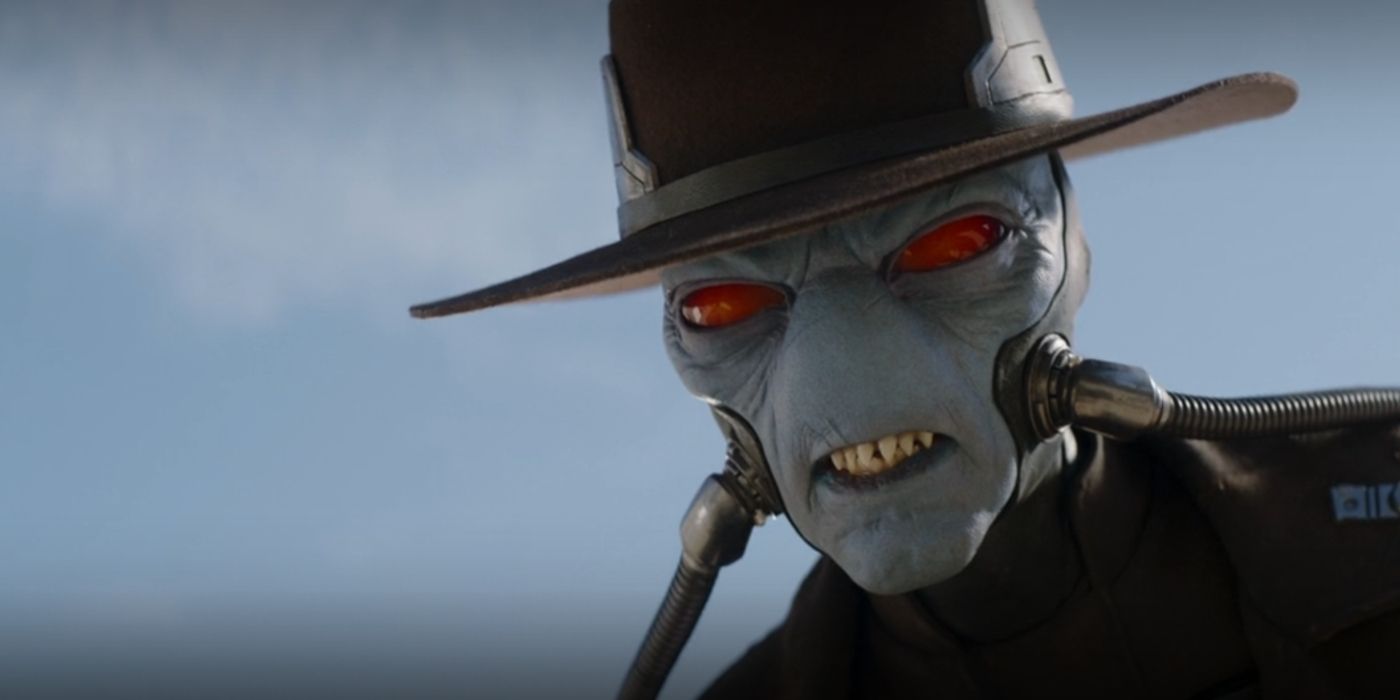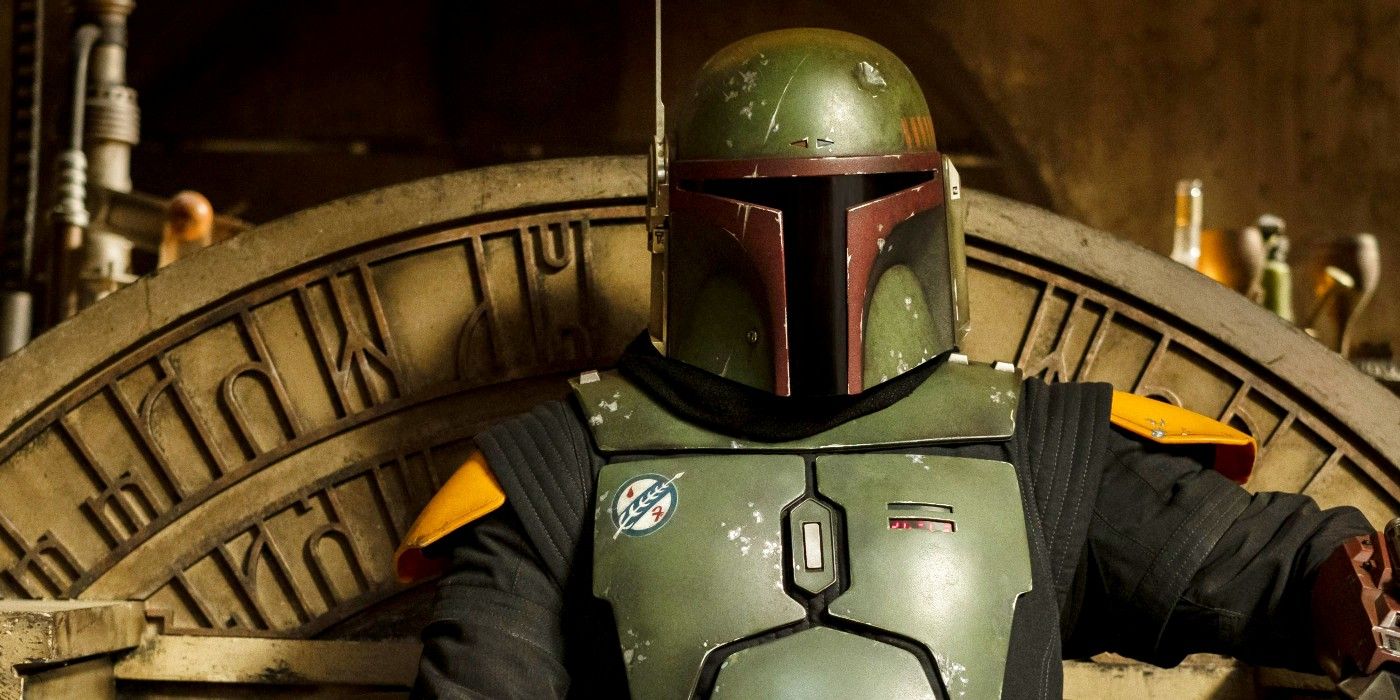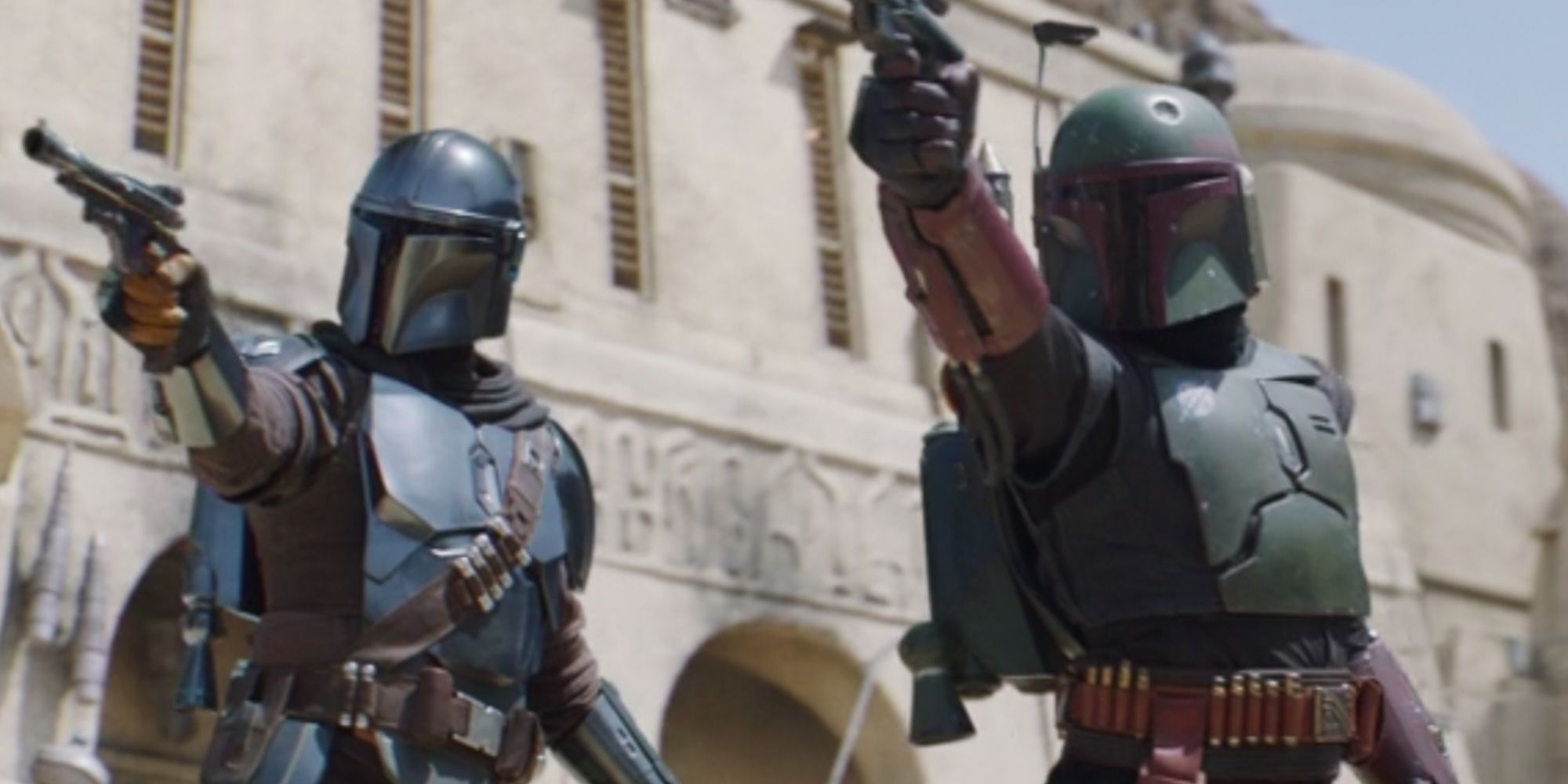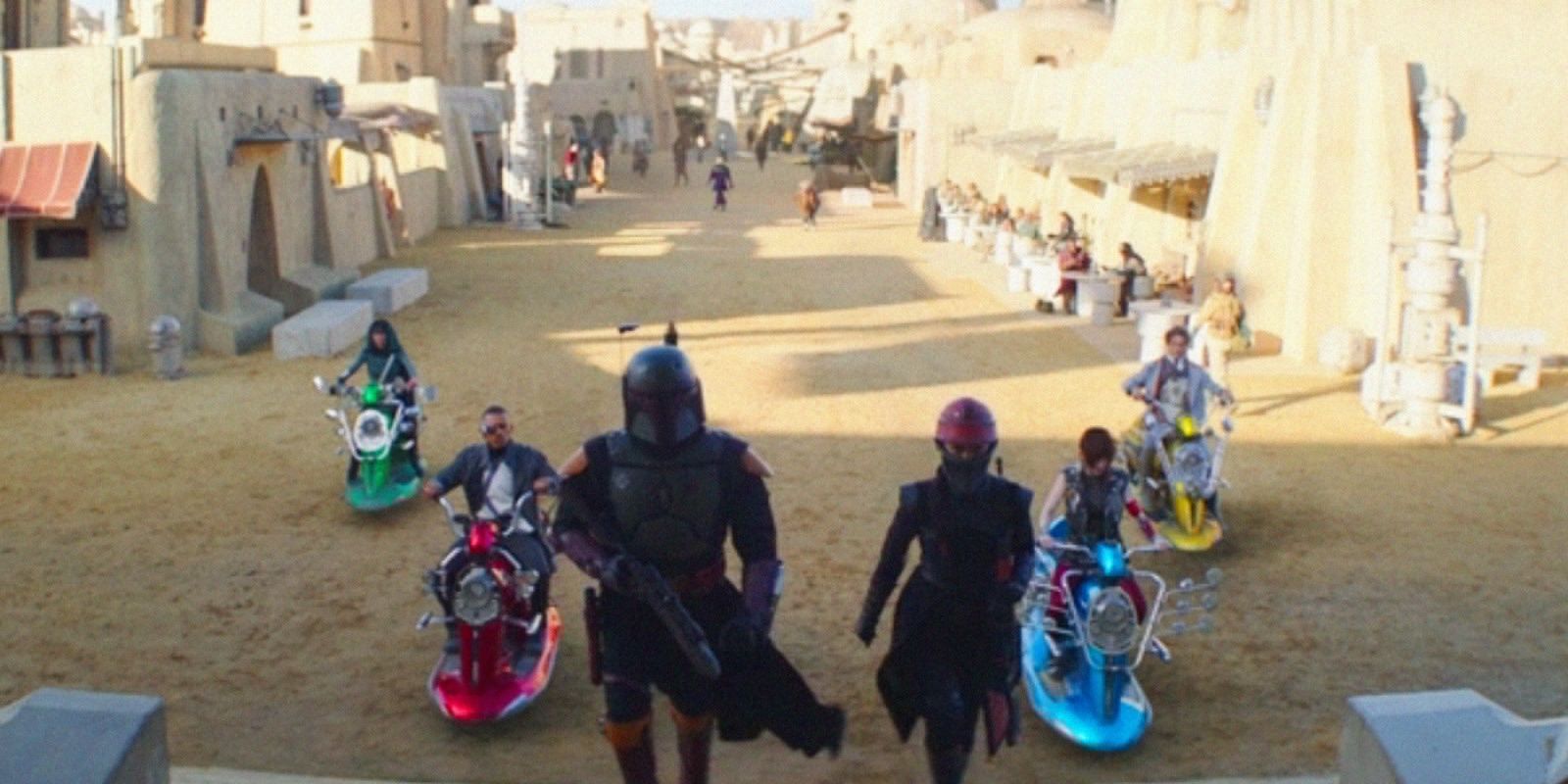This article contains spoilers for The Book of Boba Fett.
The Book of Boba Fett was a significant disappointment for Lucasfilm and a number of factors led to it going so wrong. Lucasfilm has always recognized the potential of crossing over across mediums, but under Disney Star Wars has become a trailblazing transmedia franchise. Even now The Mandalorian feels like Disney+'s flagship TV show, while the revival of Star Wars: The Clone Wars was a hit. Unfortunately, The Book of Boba Fett, while eagerly anticipated, proved something of a letdown.
On review aggregate site Rotten Tomatoes, The Book of Boba Fett is the lowest-scoring Star Wars TV series; at the time of this writing, its critics' score stands at 73 percent, while its audience score is an even lower 61 percent. The show only really began to generate discussion online after episodes 5 and 6, when The Book of Boba Fett essentially pivoted to become The Mandalorian season 2.5. And, unusually for Star Wars, there doesn't seem to be much demand for a second season.
The Book of Boba Fett is only Lucasfilm's second live-action TV series. While it's true The Mandalorian is a hard act to follow, the fact remains there's a galaxy's difference between the popular and critical response to the two shows. So just what went wrong this time around?
The Book of Boba Fett Was Always Going To Be A Hard Sell
There's a sense in which The Book of Boba Fett was always destined to struggle, as its main character has historically been ill-defined. The legend of Boba Fett was well-established even before his debut in The Empire Strikes Back, when Kenner Toys began distributing an action figure of a mysterious bounty hunter said to be a particular nemesis of Han Solo. Ironically, though, George Lucas' films never really allowed him to live up to his mystique; Boba Fett only has a minor role in The Empire Strikes Back, and then he's killed off in quite an unceremonious manner in Return of the Jedi. The old Star Wars Expanded Universe attempted to give Boba Fett actual characterization by making him a champion of the Mandalorian diaspora, but all that was erased by George Lucas after Attack of the Clones.
All this means The Book of Boba Fett was always going to be a hard sell - particularly after The Mandalorian, which riffed on all of Boba Fett's traditional characteristics and even absorbed the old Expanded Universe idea of a Mandalorian diaspora. Lucasfilm had to find a way to move Boba Fett out of the space he traditionally occupies, and they did so by transforming him into a Tatooine crime boss. It was a pivot, and it needed to be sold well to make it work.
Boba Fett Failed To Develop Its Starring Character Or A Narrative Focus
Unfortunately, The Book of Boba Fett failed to do this, in large part because of a lack of focus that meant Boba Fett's new status quo was never really explored. The first four episodes of Boba Fett focused far too much on flashbacks to explain how the fearsome interplanetary bounty hunter became the man who decided to take over Jabba the Hutt's empire, but they spent precious little time exploring just what his new role involved. The problems became even more notable when Boba Fett didn't even appear in episode 5, and played only a cursory role in episode 6. As noted, Boba Fett is a character who hasn't really been developed much before; consequently, he was the last person who should have been relegated to the sidelines of his own TV series.
The Book of Boba Fett's flashbacks seemed ill-chosen, with a focus on Boba's time with a Tusken tribe; the general narrative wasn't hard to figure out, and most viewers had been able to join the dots well before the flashbacks that wrapped up in episode 4 (and oh-so-conveniently declaring Boba Fett fully recovered and no longer needing his plot device Bacta tank). These flashbacks thus slowed the narrative to a crawl, focusing on character beats that were readily identifiable and easy to predict rather than exploring some of the complexities of Boba Fett's character. Most frustrating of all, the sudden appearance of Cad Bane at the end of The Book of Boba Fett episode 6 added personal stakes to the series that were never really explained. Lucasfilm could have made their interaction far more effective by signposting it through earlier flashbacks, perhaps exploring Boba Fett's entire life rather than simply his time with the Tuskens. The final confrontation between Boba Fett and Cad Bane only had meaning for people who were intimately familiar with Star Wars: The Clone Wars.
All this meant The Book of Boba Fett lacked a cohesive narrative. It felt as though the writers were much more interested in side-stories involving Tusken tribes and Din Djarin than they were in what should have been the main narrative, Boba Fett's transformation into a crime lord. Indeed, by the end of The Book of Boba Fett, it's still unclear just what a crime lord on Tatooine does or even what criminal empire Boba Fett is actually in charge of. Jabba the Hutt was a dangerous crime lord, and yet when Boba Fett took over his empire it seemed to encompass only the town of Mos Espa. Boba spends most of his time seated on a throne, and occasionally goes for a stroll in "his" town as the series even destroyed what seemed to be the only business generating credits for him.
Boba Fett's Core Concept Just Doesn't Work
Ironically, there's probably a reason for this lack of focus: Boba Fett's Tatooine plot doesn't fit the Star Wars timeline, sitting uncomfortably with the franchise as a whole. The story takes place five years after Return of the Jedi, and it's clear Bib Fortuna has allowed Jabba the Hutt's old empire to decline. Given Tatooine's importance to the galactic underworld - it's situated near the Triellus Trade Route, part of a loose "Spice Triangle" historically managed by the Hutts - it shouldn't have been left untended by bigger players for more than a few months after Jabba's death. The Pykes in particular should have been making their push to take over the entire planet very quickly indeed. The present-day story of The Book of Boba Fett feels like an odd fit, slotted into the continuity at this point simply because of its relationship to The Mandalorian season 2 rather than because the story made sense. It's possible the writers sensed this, explaining why they found themselves drawn to other matters.
Boba Fett Focused Too Much on Cameos & Fanservice
As The Book of Boba Fett continued, the writers became increasingly focused on fanservice, and, in particular, cameos. Two entire episodes were spent with Din Djarin, giving viewers cameos from Luke Skywalker, Ahsoka Tano, Grogu, R2-D2, Cobb Vanth, and the Armorer. The Ahsoka cameo was particularly disappointing, as audiences who were invested in Ahsoka had waited years to see Anakin Skywalker's former Padawan meet his son, but because of this cameo, that first meeting already had to take place off-screen. The storytelling decisions were frankly unforgivable.
Ironically, The Book of Boba Fett episodes 5 through 7 actually give some of the cameo characters a better arc than the star of the show. Din Djarin faces the consequences of his actions in The Mandalorian season 2, while Grogu had to choose between the way of the Jedi or his relationship with Din Djarin. The arc at least makes The Book of Boba Fett feel like an important addition to the overarching Star Wars narrative, because viewers who skip this show will be utterly confused when they find Grogu back at Din Djarin's side in The Mandalorian season 3. But the fact that these cameo characters get such a significant arc when Boba Fett himself does not signifies just how problem-filled the series really is.
Boba Fett's Action Scenes Just Didn't Work
The problems with The Book of Boba Fett were unfortunately compounded by inconsistent direction, especially in terms of the action sequences. The issue is perfectly illustrated by comparing two of the show's more notable action scenes, Book of Boba Fett episode 3's bike chase scene and the earlier train heist in episode 2. The train heist was intense and entertaining, although sadly nothing new for Star Wars - it was evocative of the train heist in Solo: A Star Wars Story. But the later action sequence was notably slow and rather tame in contrast, even anticlimactic given that when it was over, Boba Fett simply dropped out of the skies, signifying that the mayor's fleeing majordomo was so focused on the swoops pursuing him that he failed to spot the former bounty hunter who'd been tailing him the whole time. Viewers took to social media to mock this sequence, and sadly other action shots were picked apart as well. One rather odd example was of one of Boba Fett's mods doing a bizarre spin-and-shoot during what was supposed to be an intense, desperate firefight in the finale.
All in all, The Book of Boba Fett was sadly not a success for Lucasfilm. Part of the problem, of course, is that The Mandalorian had set the bar so high, meaning Lucasfilm's writers and directors needed to have a really solid grasp on the story and its characters to make it work. Lacking this, they seem to have struggled to make a cohesive show, and the result was sadly displayed in episode 7 - which, at the time of writing, has the lowest critic score on Rotten Tomatoes at just 53 percent. Hopefully, Lucasfilm can learn important lessons from these mistakes, and ensure future shows don't suffer from the same failings as The Book of Boba Fett.

